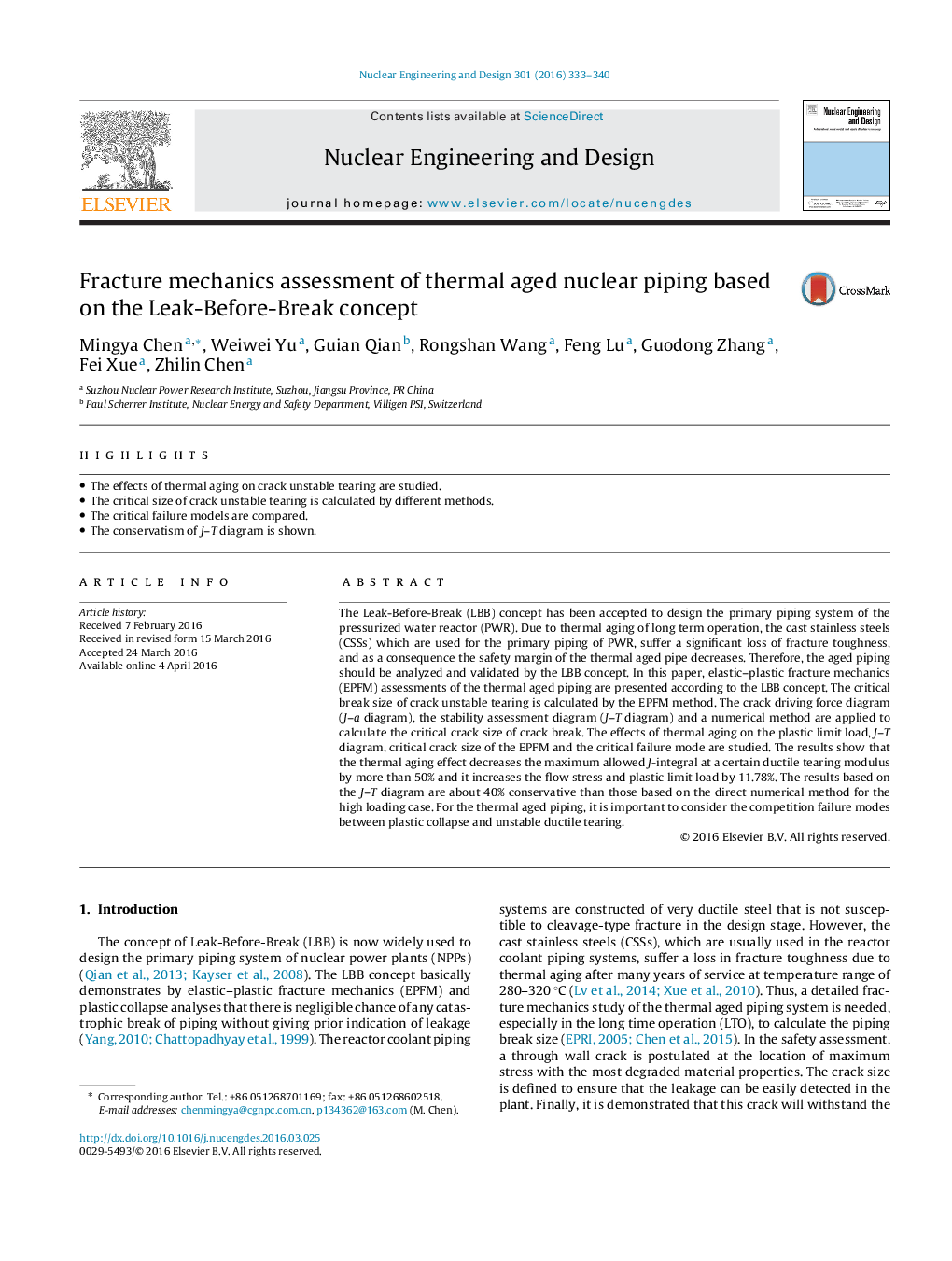| کد مقاله | کد نشریه | سال انتشار | مقاله انگلیسی | نسخه تمام متن |
|---|---|---|---|---|
| 295944 | 511695 | 2016 | 8 صفحه PDF | دانلود رایگان |
• The effects of thermal aging on crack unstable tearing are studied.
• The critical size of crack unstable tearing is calculated by different methods.
• The critical failure models are compared.
• The conservatism of J–T diagram is shown.
The Leak-Before-Break (LBB) concept has been accepted to design the primary piping system of the pressurized water reactor (PWR). Due to thermal aging of long term operation, the cast stainless steels (CSSs) which are used for the primary piping of PWR, suffer a significant loss of fracture toughness, and as a consequence the safety margin of the thermal aged pipe decreases. Therefore, the aged piping should be analyzed and validated by the LBB concept. In this paper, elastic–plastic fracture mechanics (EPFM) assessments of the thermal aged piping are presented according to the LBB concept. The critical break size of crack unstable tearing is calculated by the EPFM method. The crack driving force diagram (J–a diagram), the stability assessment diagram (J–T diagram) and a numerical method are applied to calculate the critical crack size of crack break. The effects of thermal aging on the plastic limit load, J–T diagram, critical crack size of the EPFM and the critical failure mode are studied. The results show that the thermal aging effect decreases the maximum allowed J-integral at a certain ductile tearing modulus by more than 50% and it increases the flow stress and plastic limit load by 11.78%. The results based on the J–T diagram are about 40% conservative than those based on the direct numerical method for the high loading case. For the thermal aged piping, it is important to consider the competition failure modes between plastic collapse and unstable ductile tearing.
Journal: Nuclear Engineering and Design - Volume 301, May 2016, Pages 333–340
